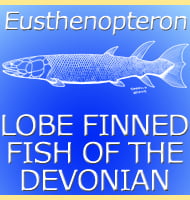Palaeospondylus
In Depth Usually considered to be a primitive fish with an elongate eel-like body, there is no universal agreement into what Palaeospondylus actually was. In the past Palaeospondylus has been proposed to be a larval lungfish, unarmoured placoderm, an arthrodire, a chimaera and even a larval tetrapod. A primitive fish that might be similar … Read more

